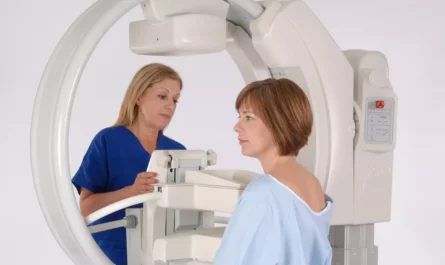Myopia and presbyopia are two common eye conditions that affect vision. Myopia, also known as near-sightedness, causes difficulty seeing distant objects clearly. Presbyopia develops as we age and causes difficulty seeing up-close objects and text. Both conditions can significantly impact daily activities and quality of life. However, with proper treatment and management, vision can usually be improved or corrected.
Causes of Myopia and Presbyopia
Myopia develops due to genetic factors or spending excessive time focusing on near objects. The eyeball becomes elongated, causing light to focus in front of the retina instead of directly on it. Presbyopia is a natural age-related condition where the lens in our eyes stiffens and loses flexibility over time after the age of 40. This reduces its ability to change shape and focus on close objects. Other possible risk factors for presbyopia include genetics, lifestyle, and prolonged near work.
Symptoms
The main symptom of myopia is blurred distance vision that gets progressively worse. Distant objects appear hazy or fuzzy. Symptoms of presbyopia include difficulty seeing or reading small print, holding reading material farther away, eye strain or headaches after near work. Some people with presbyopia may also experience blurred vision when looking at objects close up.
Treatment Options for Myopia
Glasses
Corrective eyeglasses with concave lenses remain the most common and affordable treatment choice for mild to moderate myopia. Glasses help bend light rays to properly focus on the retina.
Contact Lenses
Contact lenses are a preferred alternative to glasses for many as they do not obstruct peripheral vision. Soft and rigid gas permeable contact lenses are available. Daily or monthly disposable lenses need to be replaced regularly.
refractive surgery
Refractive surgery such as LASIK and LASEK uses excimer laser technology to permanently reshape the cornea and correct near-sightedness. It provides fast, lasting results with minimal downtime and low risk of complications in many cases. However, it may not be suitable for high degrees of myopia.
Orthokeratology
Orthokeratology uses specially designed rigid gas permeable contact lenses overnight to temporarily reshape the cornea and improve distance vision during the day without any lenses. This non-permanent option is best forchildrenor teens with progressing myopia.
Phakic IOL implantation
For high myopia, implantation of a phakic intraocular lens (IOL) behind the iris can significantly improve uncorrected vision. However, it is a more invasive procedure with potential risks like cataracts, glaucoma or vision loss. Close monitoring is required.
Treatment Options for Presbyopia
Reading Glasses
Single vision reading glasses with convex lenses are effective for mild Presbyopia. They need to be changed as the condition progresses with age.
Bifocal Glasses
Bifocal glasses have different lens prescriptions for distance and near vision placed either at the bottom or top of the lens. This works well when alternate focusing between distances is required.
Progressive Lenses
Progressive lenses or no-line multifocals gradually change the prescription from the top to bottom of the lens without a visible line. They take some getting used to but provide clear vision at all distances without switching glasses.
Monovision Contact Lenses
Presbyopia may also be corrected with monovision—wearing a contact lens for distance in one eye and for near vision in the other eye. Brain adaptation is required but it eliminates the need for multiple eyewear.
Presbyopia-Correcting IOLs
For patients undergoing cataract surgery, a presbyopia-correcting or multifocal IOL can be implanted to provide both distance and near vision without glasses. However, there may be some visual side effects and loss of clear vision at intermediate distances.
In summary, choosing the most appropriate treatment depends on the severity of the condition, lifestyle needs, risk tolerance and budget. Regular eye exams are important to monitor progression and changes in prescription over time. With improved options available, managing myopia and presbyopia has become fairly simple in most cases.
*Note:
1. Source: Coherent Market Insights, Public sources, Desk research
2. We have leveraged AI tools to mine information and compile it



